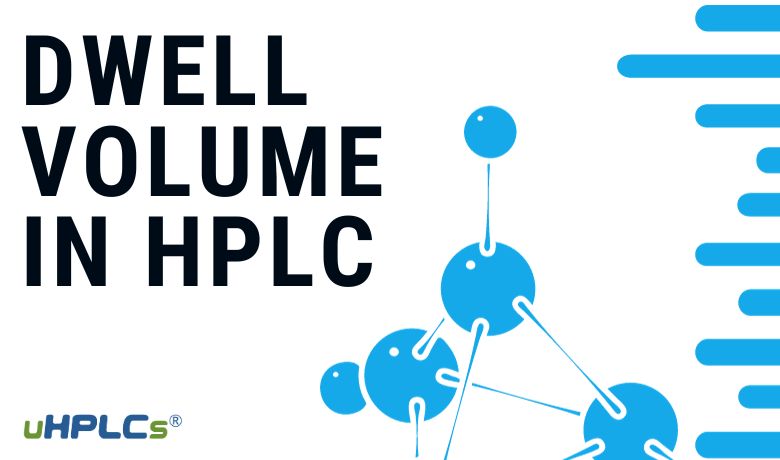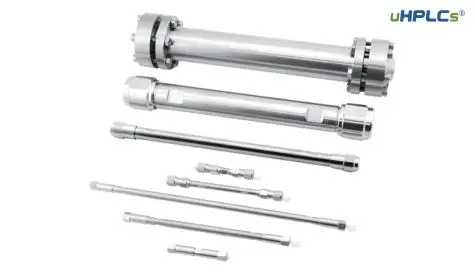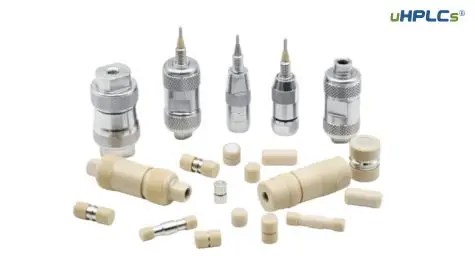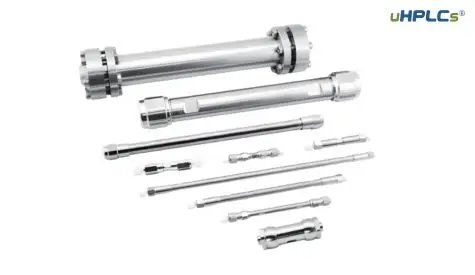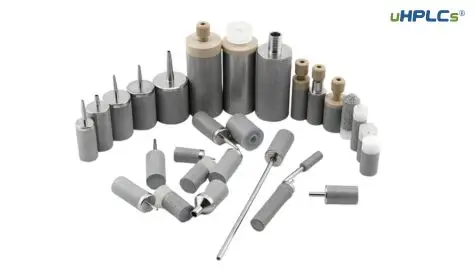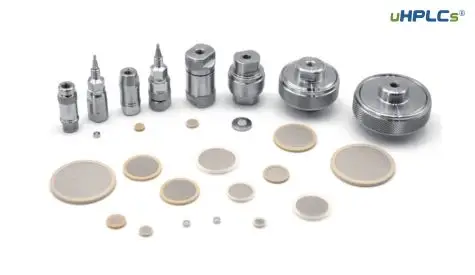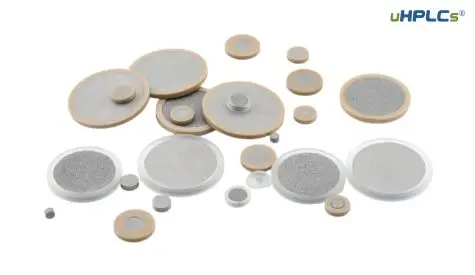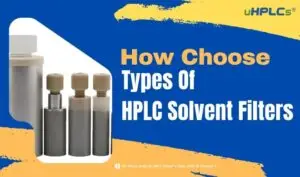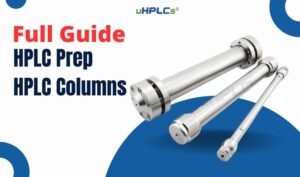What is HPLC?
High-Performance Liquid Chromatography (HPLC) is a widely-used analytical technique in chemistry and biochemistry. It is employed to identify, quantify, and separate components in a mixture. HPLC utilizes a liquid solvent as the mobile phase to carry the sample mixture through a column packed with a stationary phase. As the sample interacts with this stationary phase, individual components in the sample mixture separate at different rates, allowing for their detection and quantification.
Importance of Dwell Volume
Dwell volume, also known as system volume or gradient delay volume, plays a pivotal role in the performance of an HPLC system, especially in gradient elution. It represents the volume between the point where the gradient is formed (often in the mixer) and the head of the chromatographic column. This volume is critical as it determines the delay between the time a change is made in the solvent composition and the time that change reaches the column. In gradient methods, this means the delay affects the start of the gradient and can influence retention times, peak shape, and even the resolution of compounds.
An appropriate dwell volume ensures the reproducibility of gradient runs across different HPLC systems. For users and potential buyers, understanding dwell volume becomes crucial if they are considering transferring methods between instruments or if they are aiming to achieve optimal and consistent results in their analyses.
In this guide, we will delve deeper into the intricacies of dwell volume, how to calculate it, and why it matters for everyone in the realm of HPLC. Whether you’re a seasoned chromatographer or a novice just stepping into the field, understanding the concept of dwell volume will significantly elevate the quality and reproducibility of your chromatographic results.
Basics of Dwell Volume
Definition of Dwell Volume (Vd)
Dwell Volume (Vd) refers to the volume of mobile phase from the point at which the solvents are mixed in a gradient system until the point they enter the chromatographic column. In simpler terms, it’s the volume within which the mixed solvents reside, or “dwell,” before they interact with the sample in the column. This concept is crucial for gradient elution where the composition of the mobile phase changes over the course of the run.
The significance of Dwell Volume in HPLC System
Understanding the importance of the dwell volume can be broken down into three primary areas:
Temporal Shifts: The dwell volume results in a delay between when a change is commanded in the solvent proportion (at the pumps or solvent mixer) and when that change is seen at the column inlet. This delay can influence the gradient’s onset time on the column and consequently the elution times of the sample components.
Reproducibility Across Systems: Different HPLC systems have different dwell volumes. When transferring a method from one system to another, ignoring the difference in dwell volumes can result in a loss of resolution or changes in elution order, potentially compromising the analysis’s quality.
Method Scalability: For those who develop methods on one system (e.g., an analytical scale system) and transfer them to another (like a preparative scale system), the dwell volume becomes even more critical. A mismatch can drastically alter the separation profile when scaling up.
The concept of dwell volume in HPLC may seem straightforward, but its impact on chromatographic separations can be profound. As we progress through this guide, we’ll explore how to calculate dwell volume, its effects on chromatography, and the considerations every HPLC user should keep in mind for ensuring consistent and accurate results.
Factors Influencing Dwell Volume
3.1 Column dimensions
The dimensions of the column, primarily its length and internal diameter, can indirectly affect the dwell volume. While the column itself doesn’t contribute to the dwell volume, the choice of column can necessitate changes in the system setup, such as different connectors or tubing, which can alter the dwell volume. For instance, switching from an analytical column to a narrow-bore or capillary column might require a change in system tubing to reduce extracolumn band broadening.
1.2 Pump and injector design
Pump Design: The design and type of pump play a significant role in the dwell volume. For example, low-pressure mixing systems, where solvents are mixed after the pumps, typically have a larger dwell volume compared to high-pressure mixing systems where the mixing happens before the pumps.
Injector Volume: The volume of the injector loop and associated tubing also contributes to the total dwell volume. Different injector designs and sizes can therefore alter the dwell volume, especially if one is switching between manual and auto-samplers.
1.2 Tubing and connectors
The physical components that connect various parts of the HPLC system, like tubing and connectors, are direct contributors to the dwell volume. Here’s why they matter:
Tubing Length and Diameter: The volume of the tubing depends on its internal diameter and length. Longer or wider tubing increases the dwell volume. Using tubing that’s too long or with a larger internal diameter than necessary can unnecessarily inflate the dwell volume.
Connectors and Mixing Chambers: Any additional connectors, junctions, or mixing chambers present in the flow path can add to the dwell volume. While they might seem insignificant, they can be crucial, especially in systems where precision and low dwell volumes are necessary.
Understanding the factors that influence dwell volume is essential for anyone looking to get consistent results in HPLC, especially when transferring methods between different systems. As we delve deeper into the guide, we’ll discuss how to measure and account for these factors, ensuring that your chromatographic methods are both robust and reproducible across various setups.
Why is Dwell Volume Critical?
1.1 Impact on Gradient Accuracy
The gradient in HPLC is a systematic change in the proportion of two or more solvents over the analysis time. When there’s a delay in the gradient reaching the column due to the dwell volume, the entire gradient program can be offset. This might lead to:
Earlier or Later Elution Times: Depending on the direction of the gradient and the size of the dwell volume, compounds might elute earlier or later than expected.
Peak Shape Alterations: A change in the gradient profile can lead to peak broadening, tailing, or fronting, which can affect the resolution and quantitative accuracy.
1.2 Effects on Separation Efficiency
Changes in the gradient profile can have pronounced effects on the separation efficiency:
Loss of Resolution: A significant mismatch in dwell volumes can lead to merged or poorly separated peaks, making it difficult or impossible to distinguish and quantify individual components.
Potential Shift in Elution Order: In extreme cases, especially with closely eluting compounds, a change in the gradient onset might lead to a shift in the order of compound elution.
Calculating Dwell Volume in HPLC
1. Direct Measurement Method
This is one of the most straightforward methods for determining the dwell volume:
Using a non-adsorbing compound: A compound that does not interact with the stationary phase, often uracil or acetone, is injected into the system. By changing the mobile phase composition suddenly (e.g., from 100% A to 100% B) and noting the time difference between the change and the appearance of the non-adsorbing compound peak, the dwell volume can be calculated using the formula:
Vd=Flowrate × Timedifference
Procedure and considerations: It’s crucial to ensure that the chosen compound does not interact with the column and that there’s a clear, sharp change in the mobile phase composition. Also, the measurements should be repeated several times to obtain an average value for increased accuracy.
2. System Geometry Method
This is a more theoretical approach that involves summing up the volumes of all components between the mixing point and the column head:
Incorporating component volumes: The volumes of the pump heads, mixer, tubing, and injector loop (if it’s in the flow path during the analysis) are all added together. Manufacturer specifications can provide some of these values, while others might need direct measurement.
Adjustments for practical scenarios: While this method gives a theoretical value, there might be slight discrepancies in real-world scenarios due to factors like compressibility of solvents, especially at high pressures. Therefore, it’s often used as a preliminary estimation, which might then be refined using the direct measurement method.
Calculating and understanding the dwell volume of an HPLC system is foundational for achieving reproducible and accurate results. It becomes even more pivotal when transferring methods between different chromatographs, ensuring that the transferred method remains as robust and reliable as the original.
Effects of Changing Dwell Volume
1. Shifts in Retention Time
Any change in the dwell volume directly affects the time it takes for a gradient to impact the column. This can lead to significant shifts in the retention time of compounds. Here’s what you need to understand:
Earlier or Later Onset: If the dwell volume increases, the gradient takes longer to reach the column, pushing the retention times later. Conversely, a decrease in dwell volume means the gradient impacts the column sooner, leading to earlier retention times.
Consistency is Key: For reproducible results, it’s not the absolute value of the dwell volume that’s critical but its consistency. If the dwell volume remains constant, even if it’s not the “ideal” value, chromatographers can adjust their methods accordingly to achieve consistent results.
2. Compatibility with Different HPLC Systems
One of the major challenges with dwell volume is the transition of methods between different HPLC systems:
Different Systems, Different Dwell Volumes: Almost every HPLC system, even from the same manufacturer, can have a slightly different dwell volume. This difference becomes pronounced when switching between brands or models, like from an older system to a modern UPLC system.
Method Adjustment: When transferring a method to a new system with a different dwell volume, chromatographers might need to adjust gradient times, solvent proportions, or even temperature to achieve a similar separation.
Software Compensation: Some modern HPLC systems come equipped with software that allows for “dwell volume compensation.” This feature can adjust the gradient automatically based on the entered or measured dwell volume, ensuring that the method remains consistent across systems.
Understanding the ramifications of changing the dwell volume can help chromatographers preempt potential challenges. By being aware of how modifications in system setup, components, or even entire chromatographs can affect the dwell volume, they can take proactive steps to ensure that their analyses remain consistent, accurate, and reproducible.
Contact Us
Navigating the intricacies of HPLC, especially the critical aspect of dwell volume, can often seem daunting. Whether you’re a seasoned expert adjusting methods across systems or a beginner trying to understand the foundation for reproducible results, the importance of accurately determining and understanding dwell volume cannot be overstated.
If you have further questions or need assistance with your HPLC system or dwell volume calculations, our team at uHPLCs is always here to help. We bring expertise, experience, and a commitment to ensuring that your chromatographic analyses achieve the highest levels of precision and reliability.
Reach out to us today at sales@uhplcs.com for all your HPLC queries and requirements. Let’s work together to elevate the quality and consistency of your analytical results.

